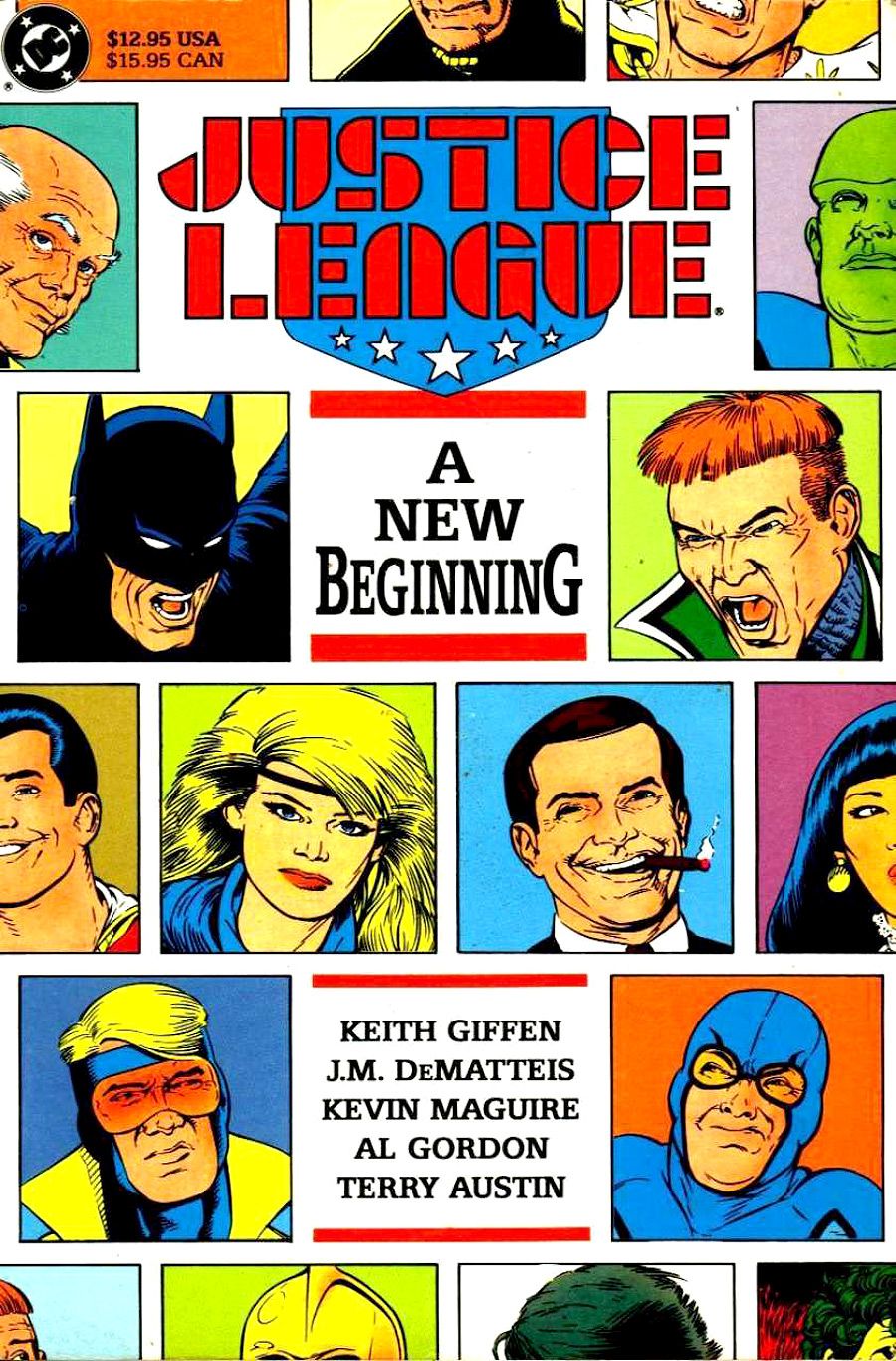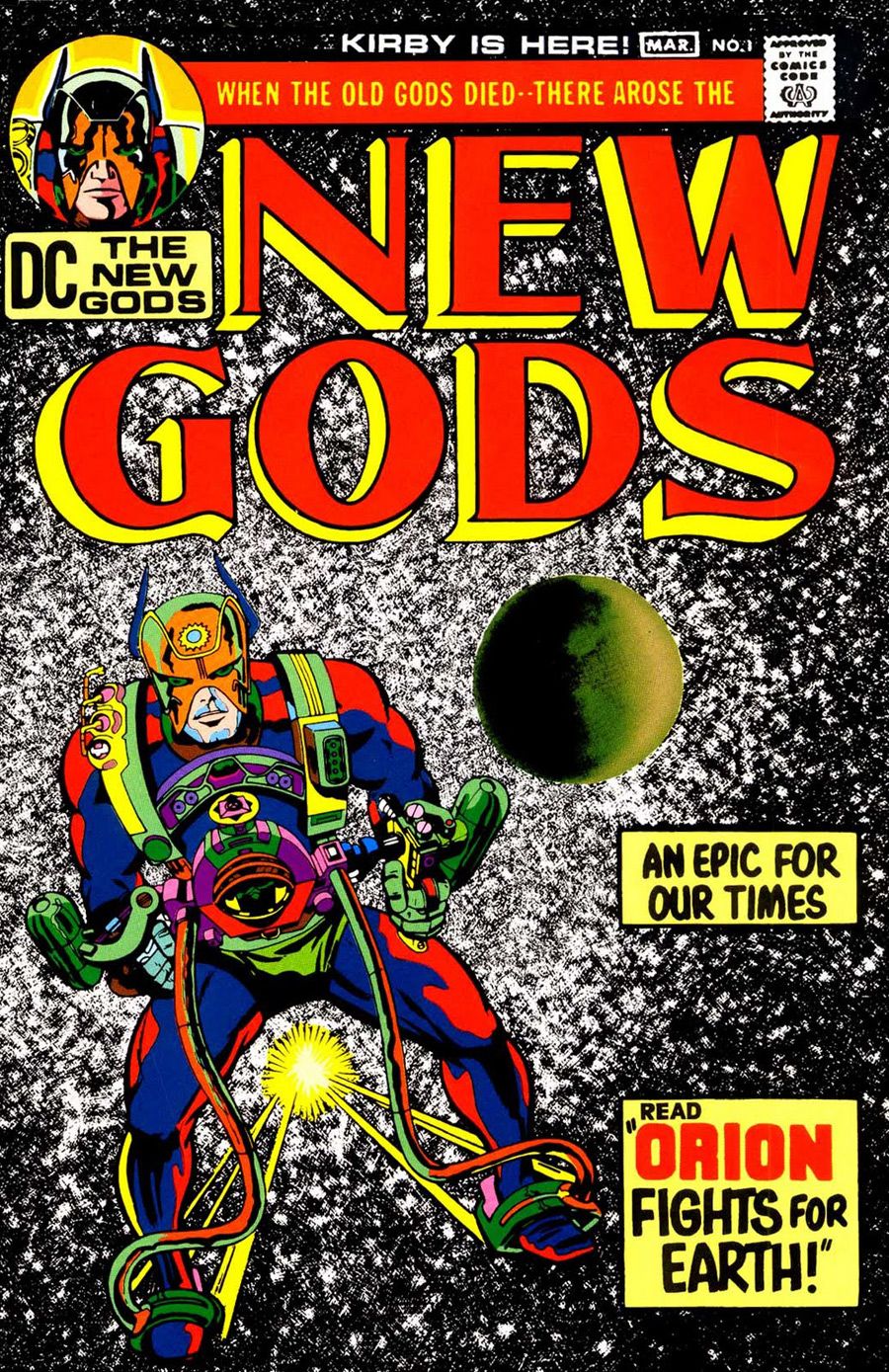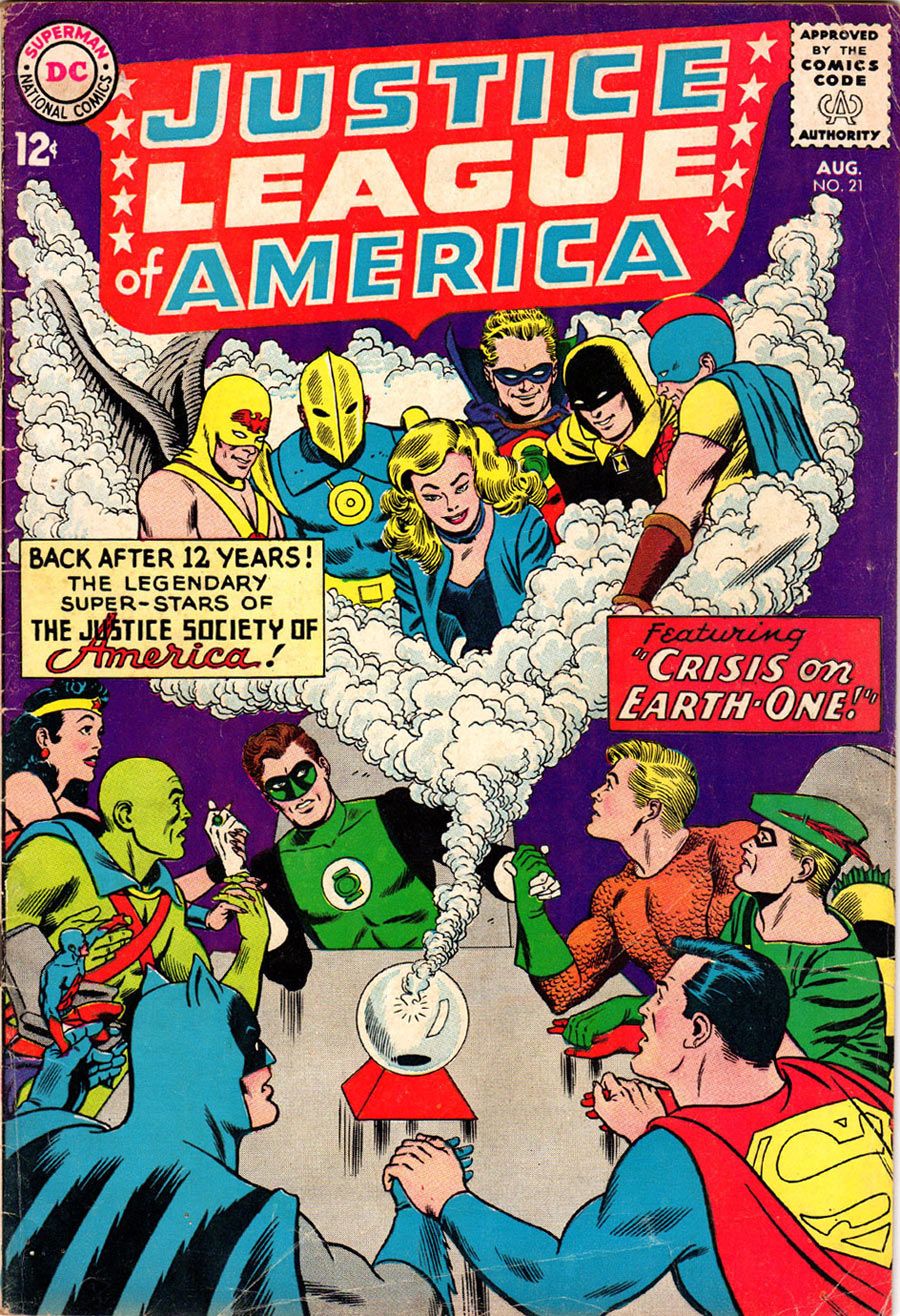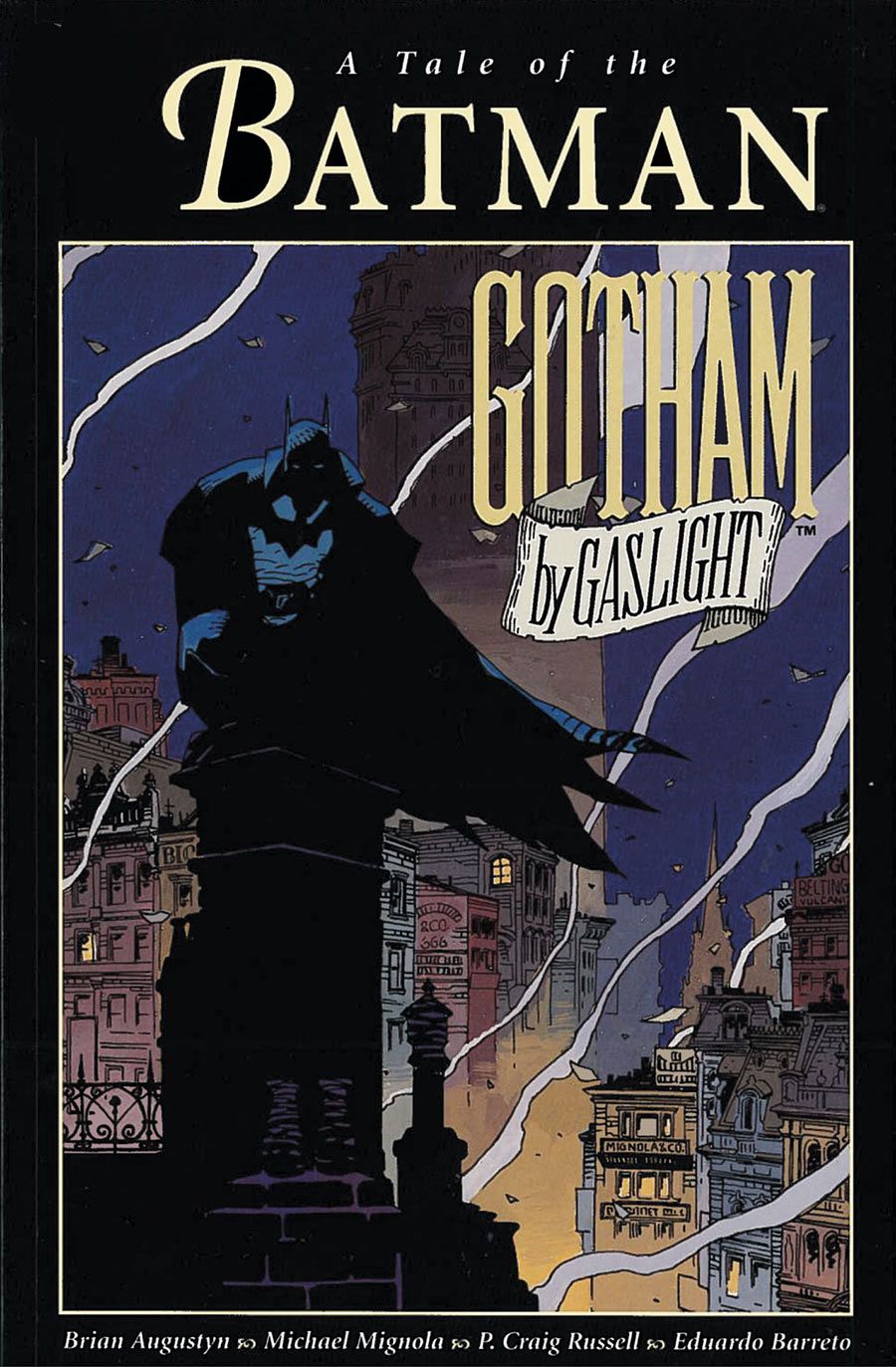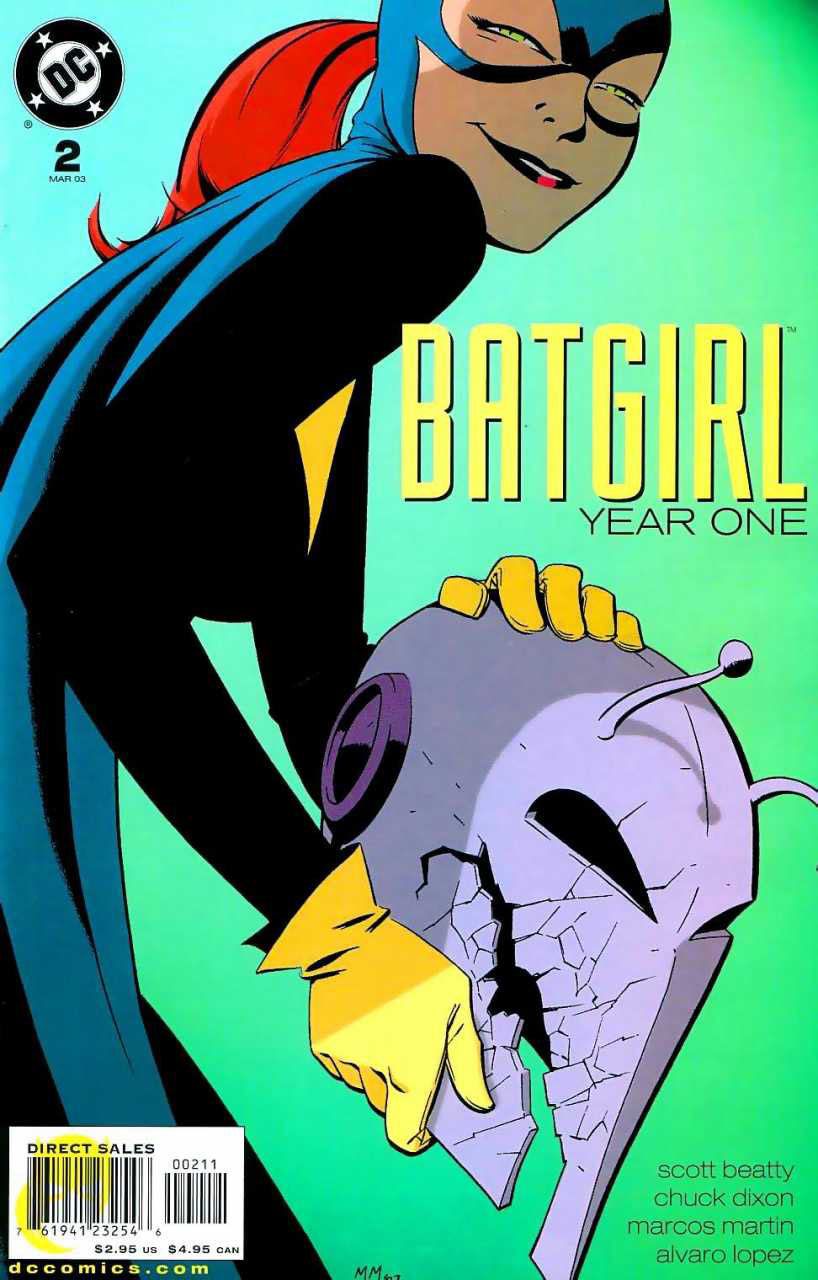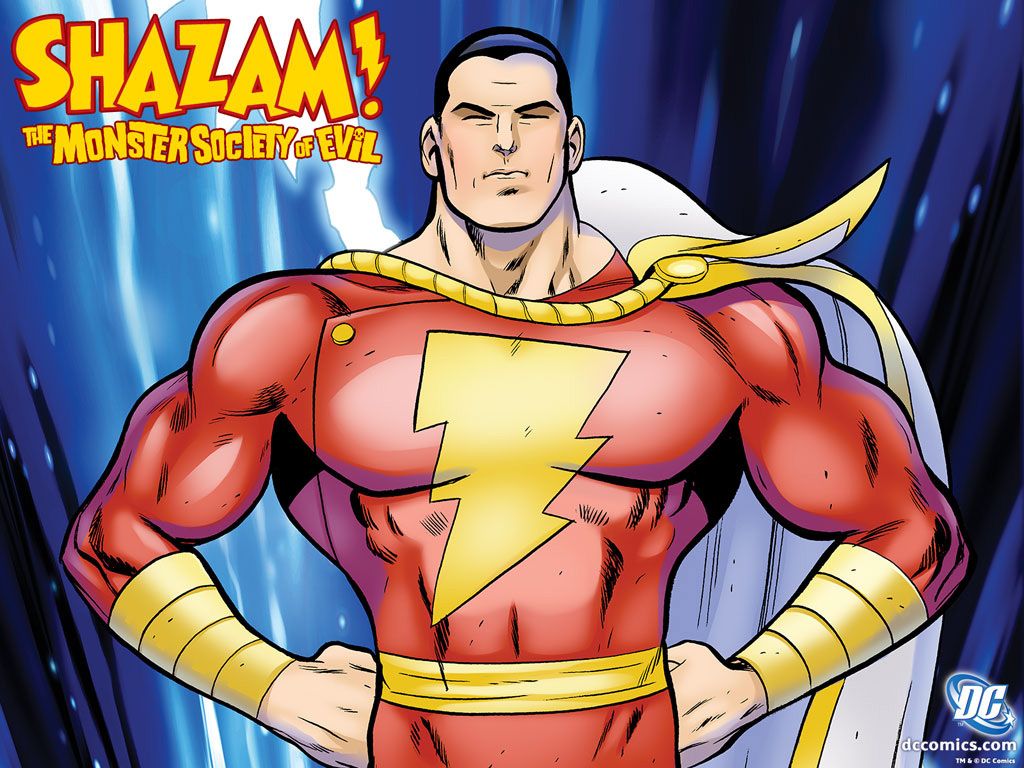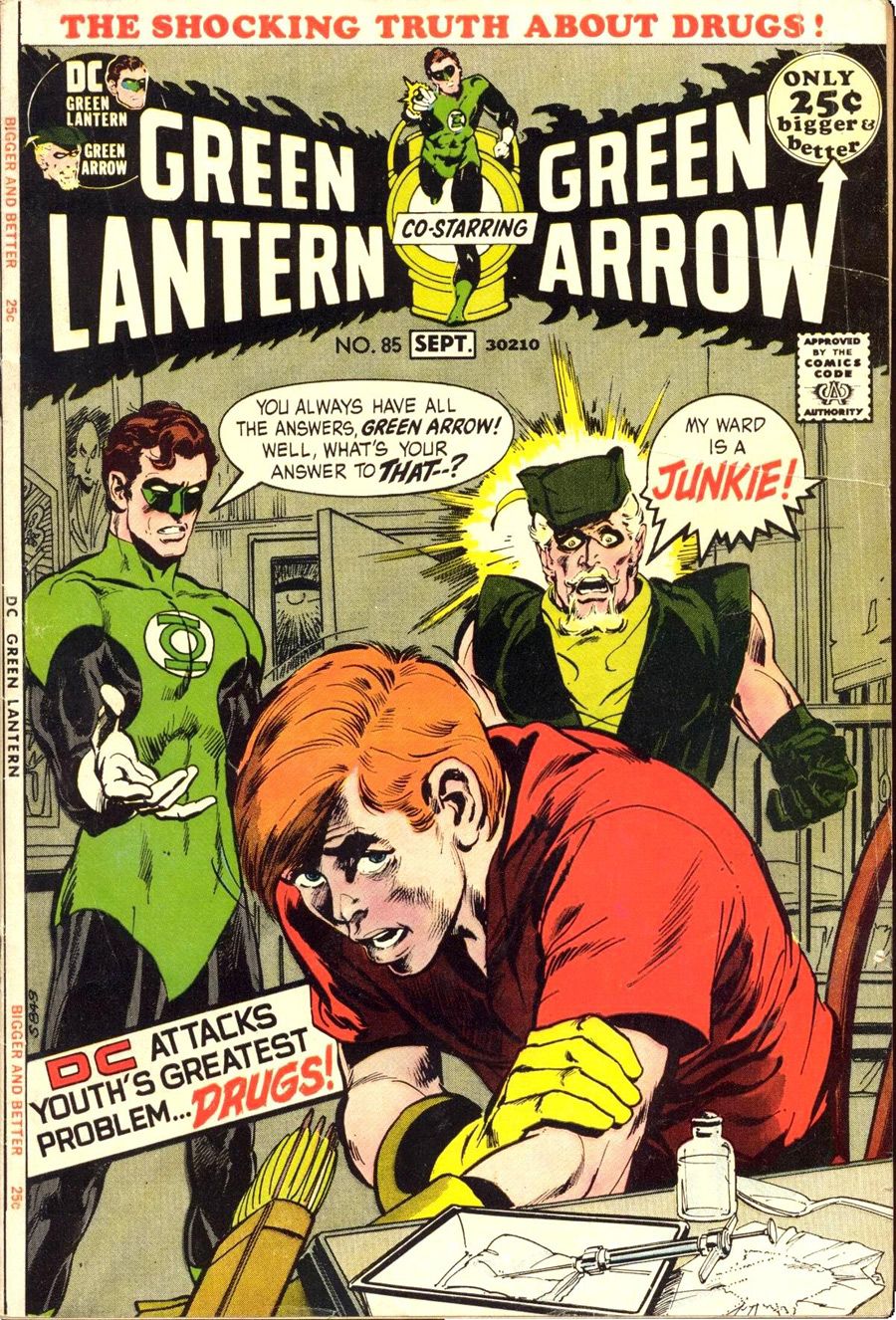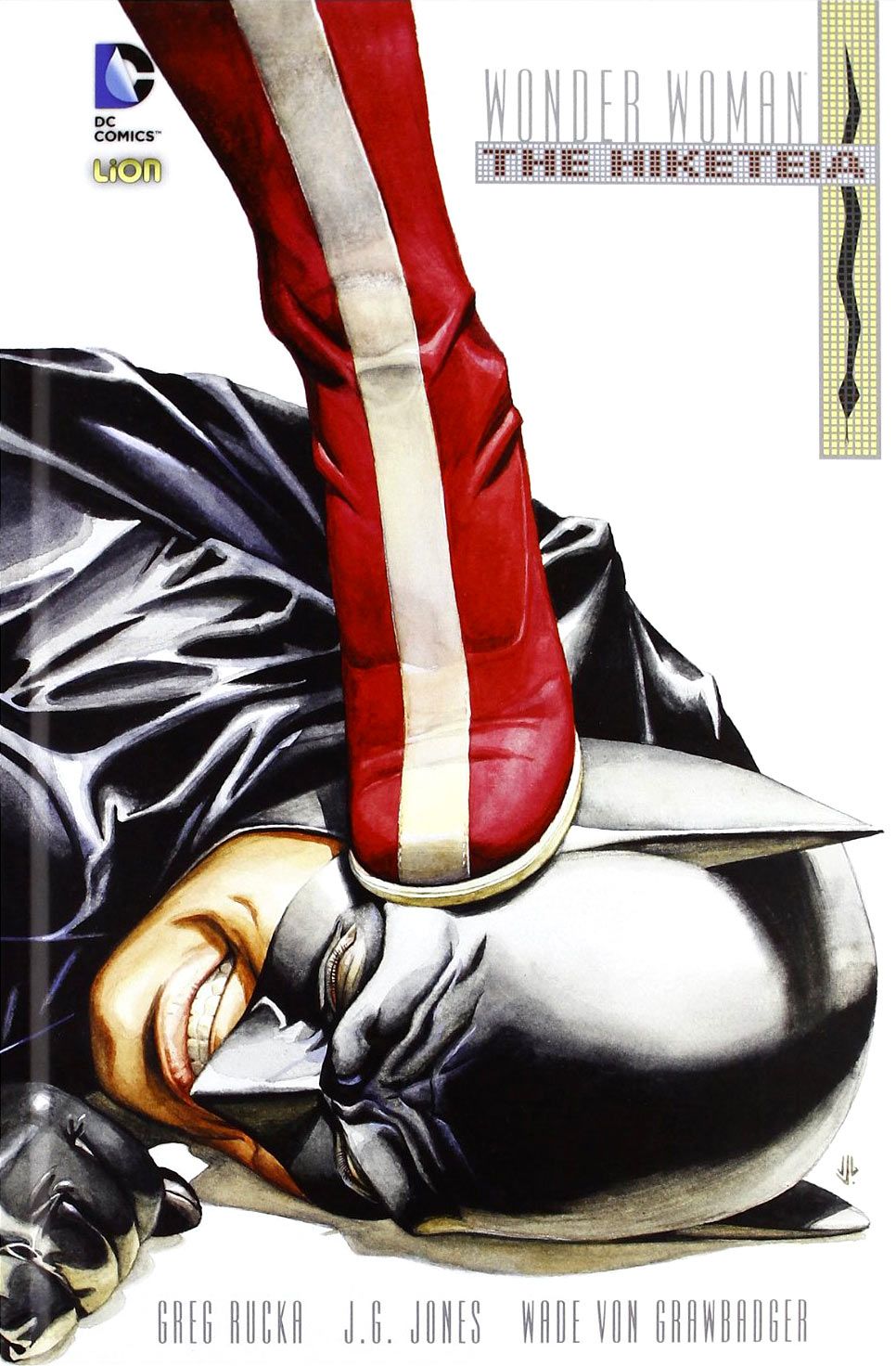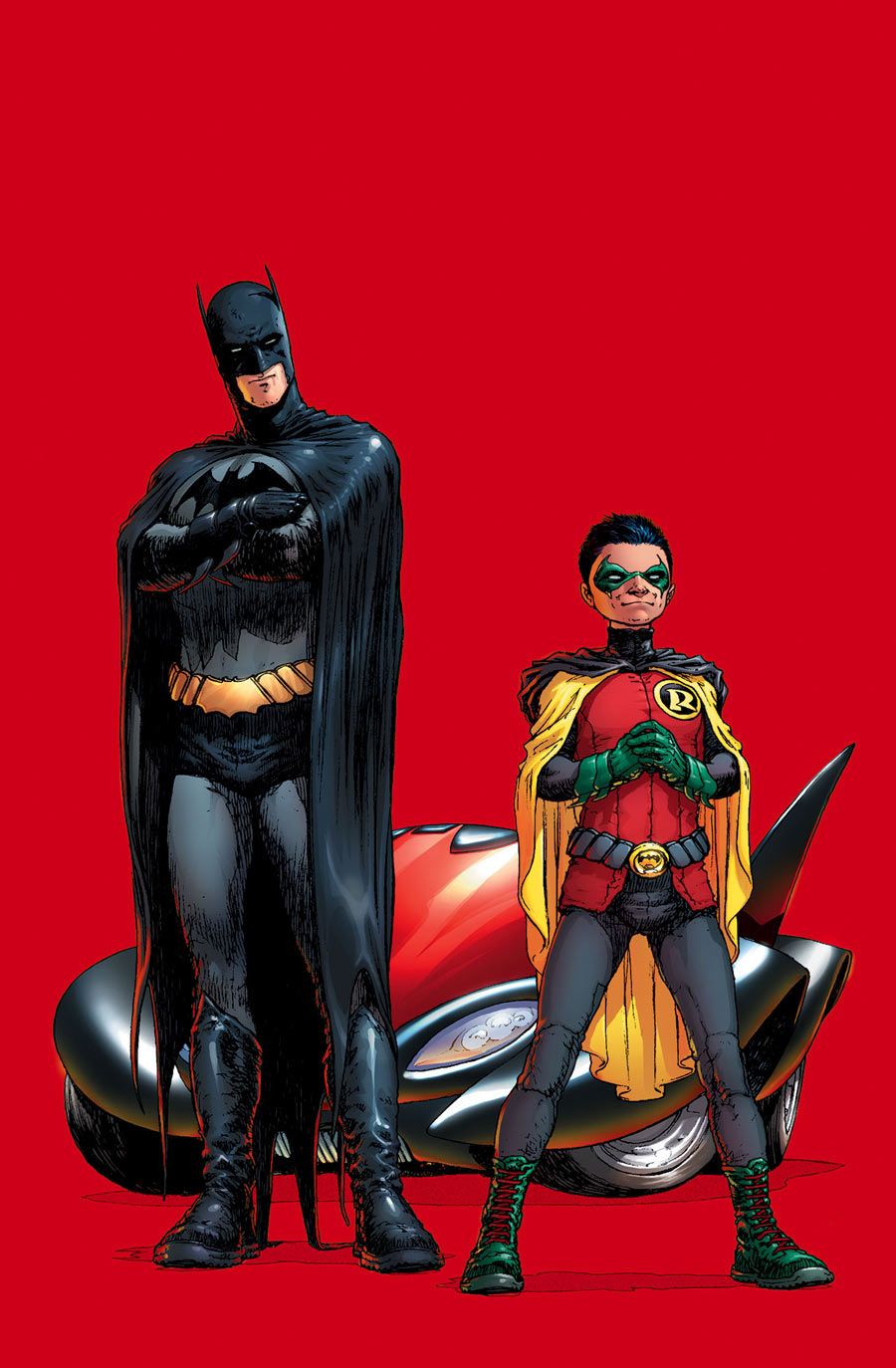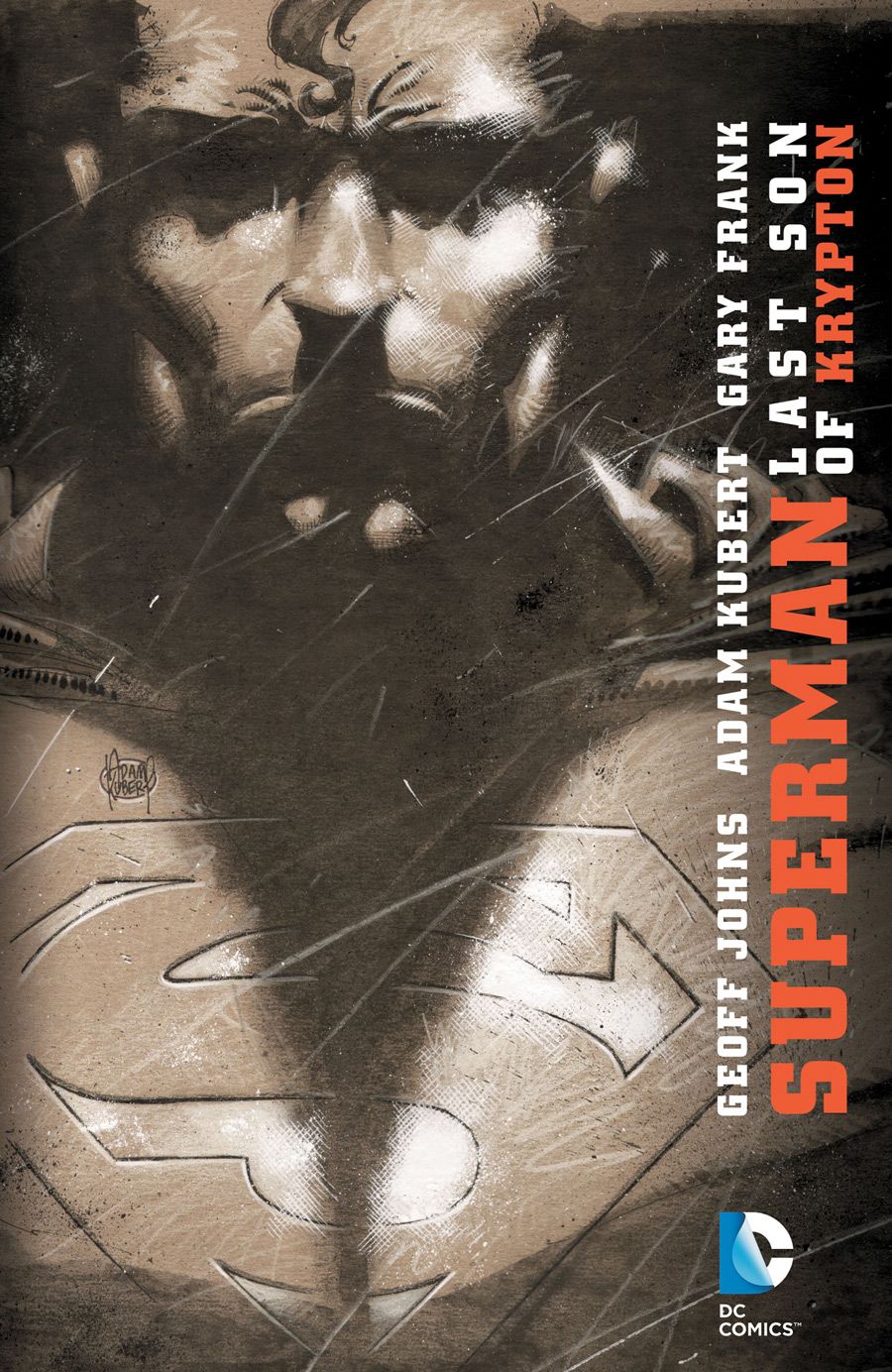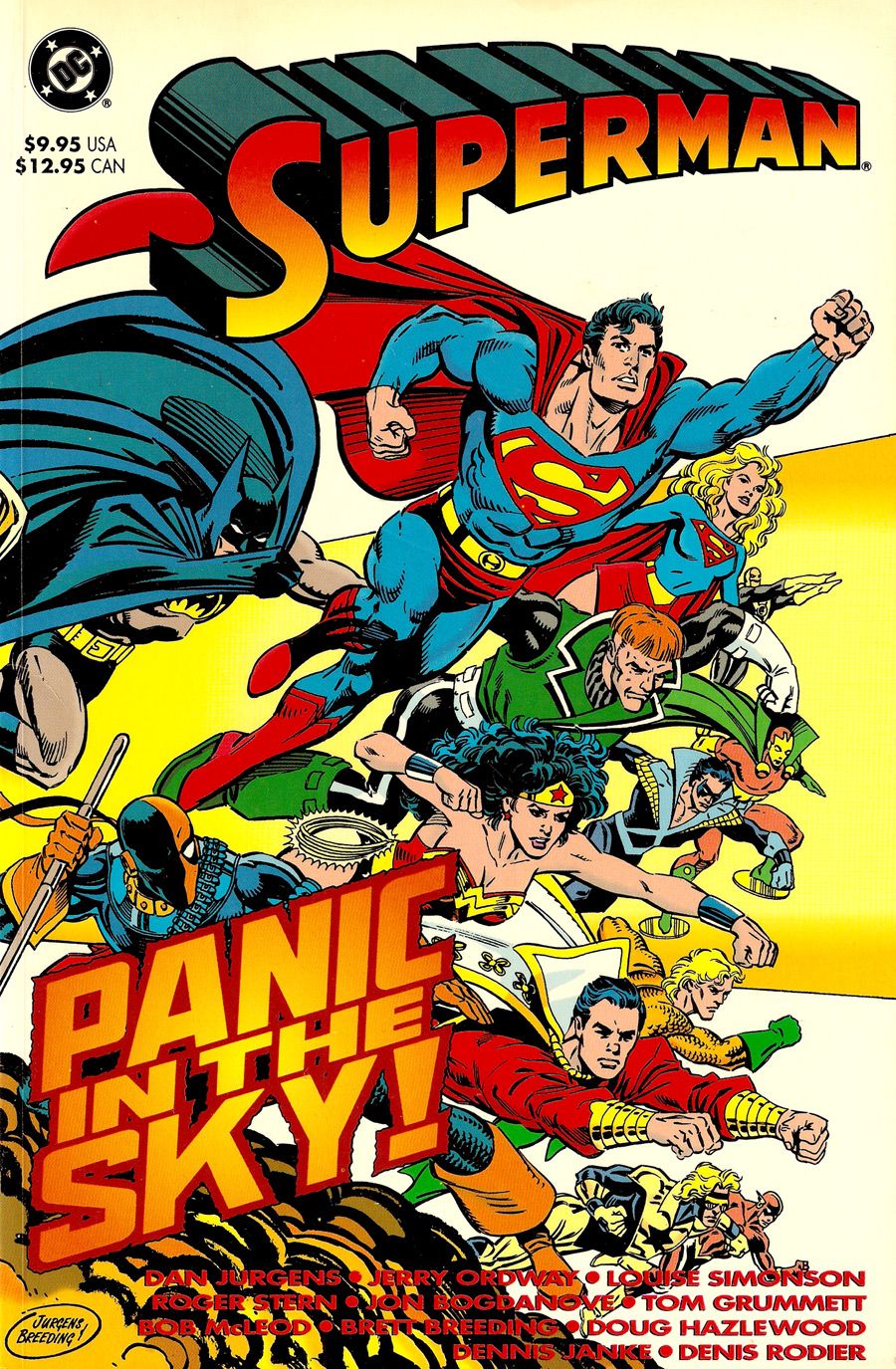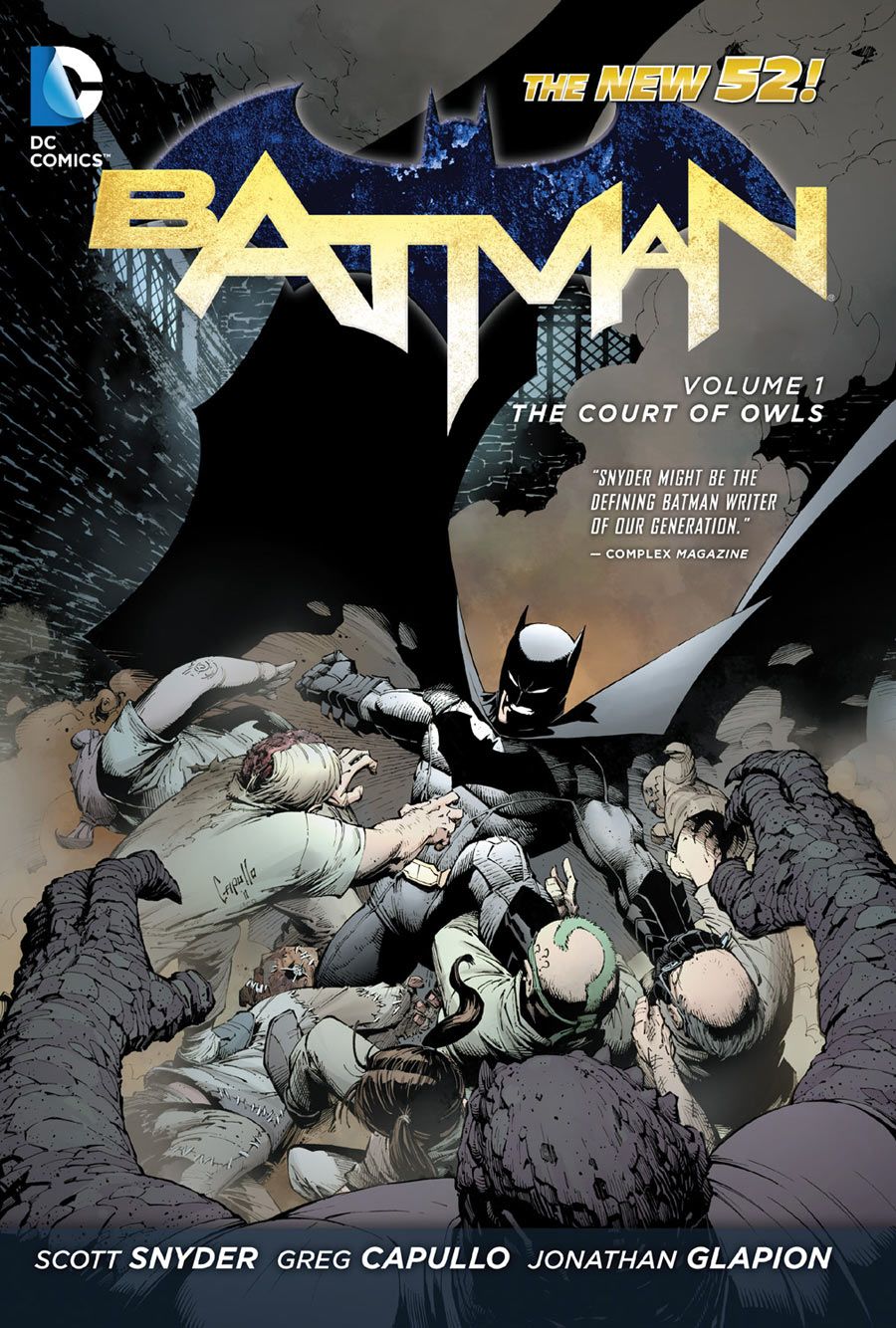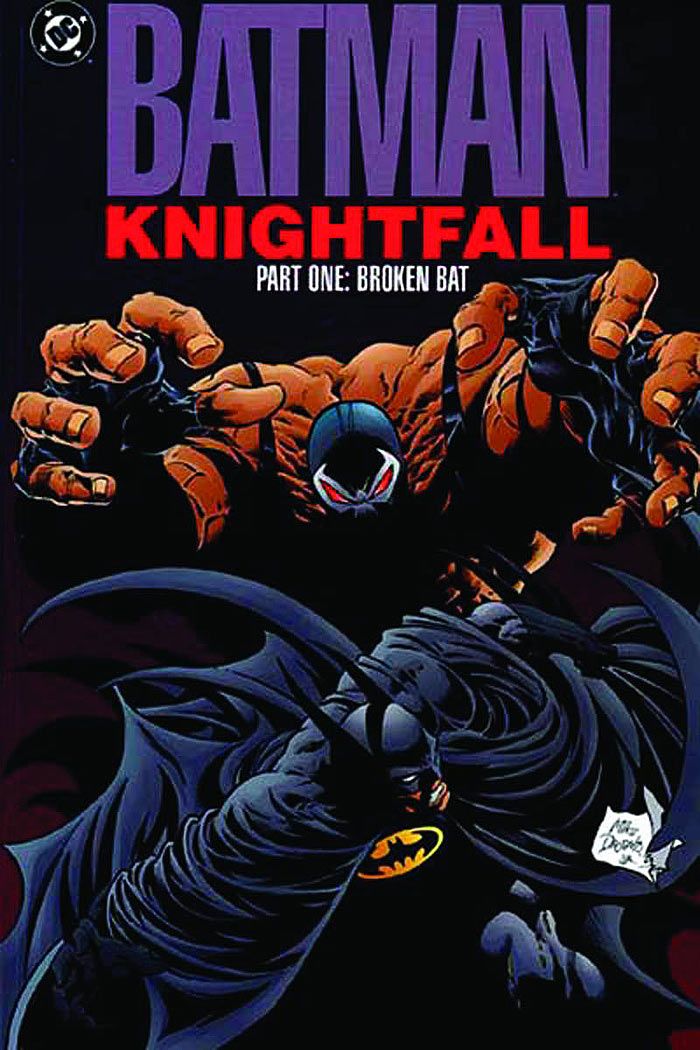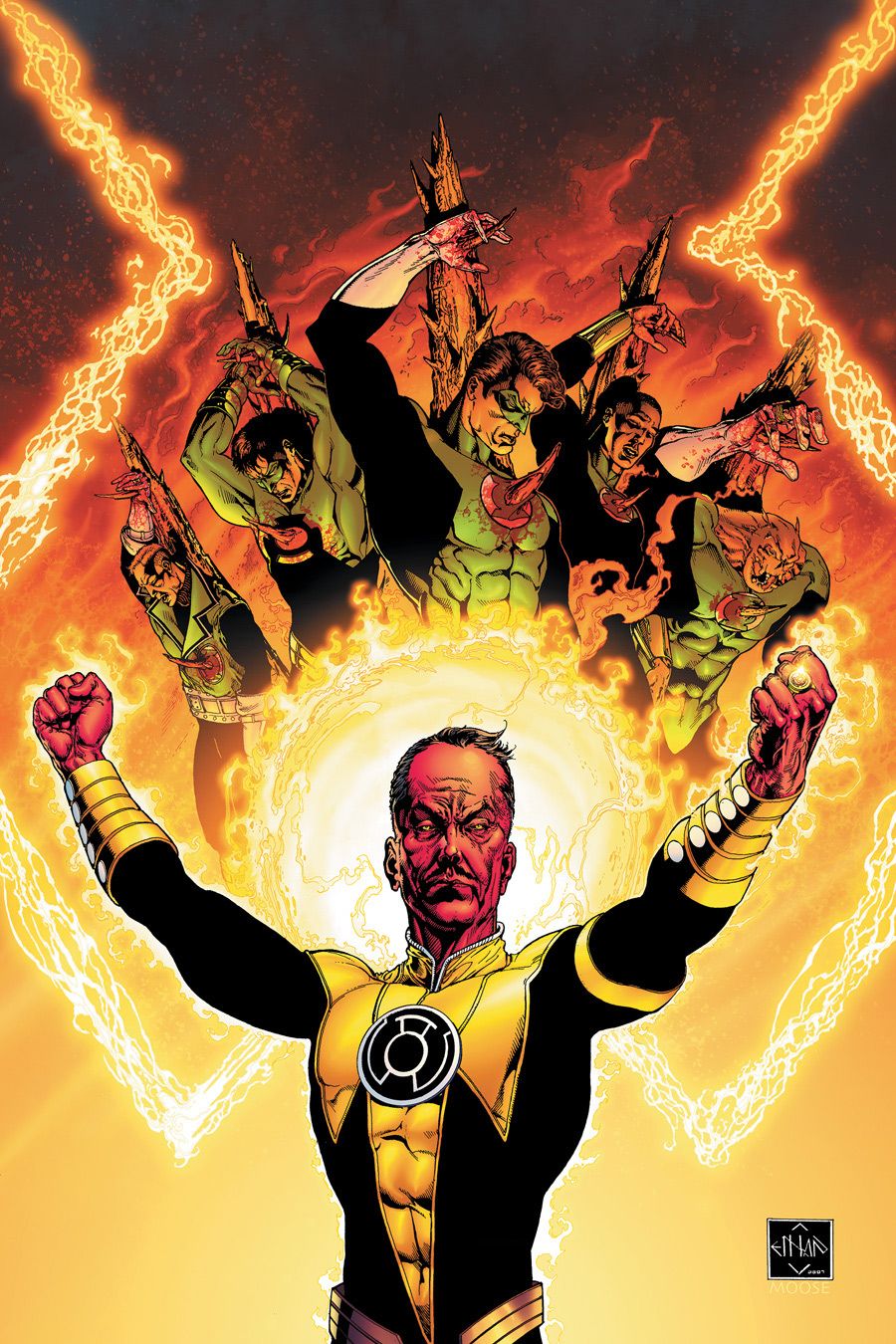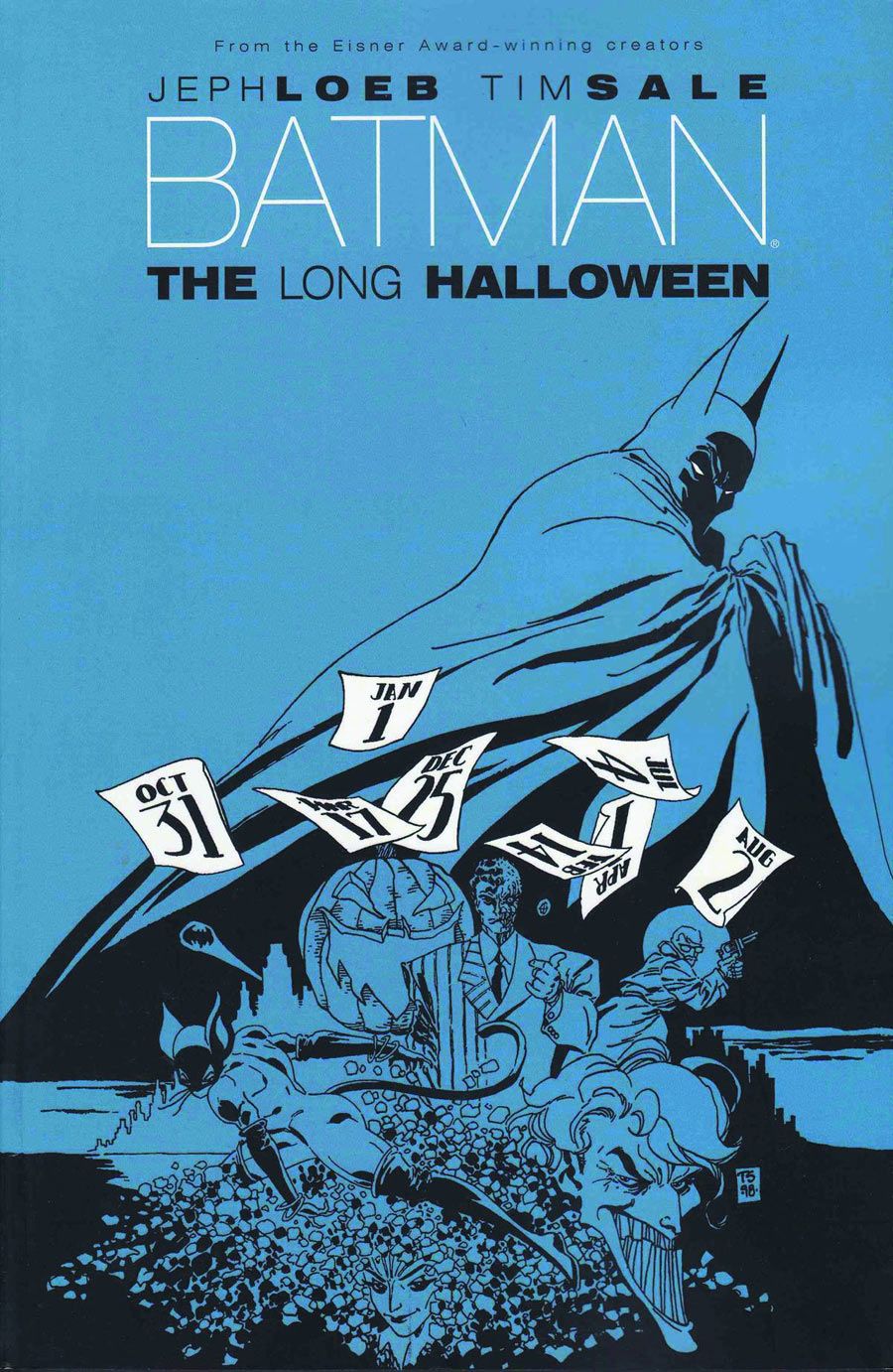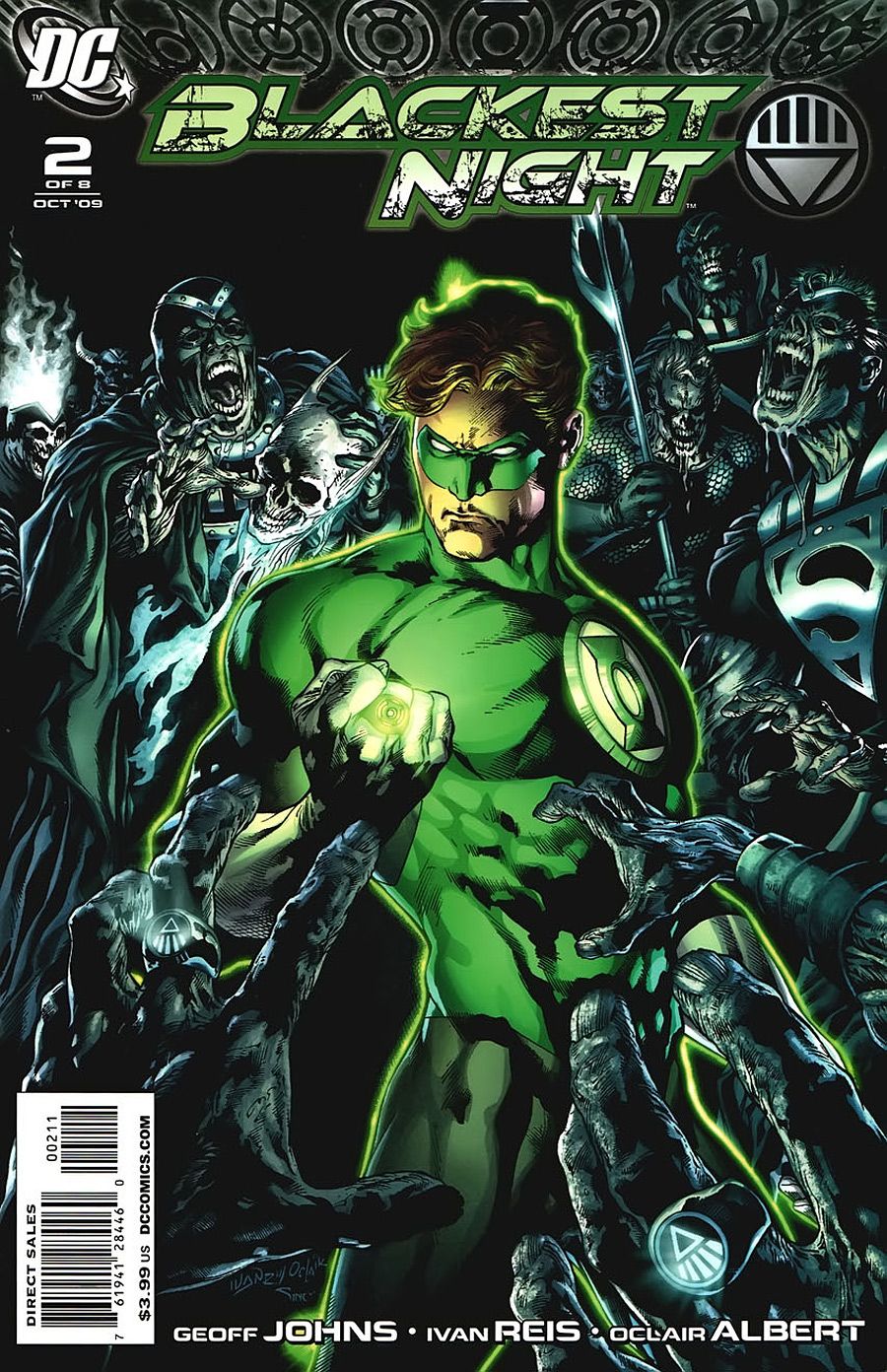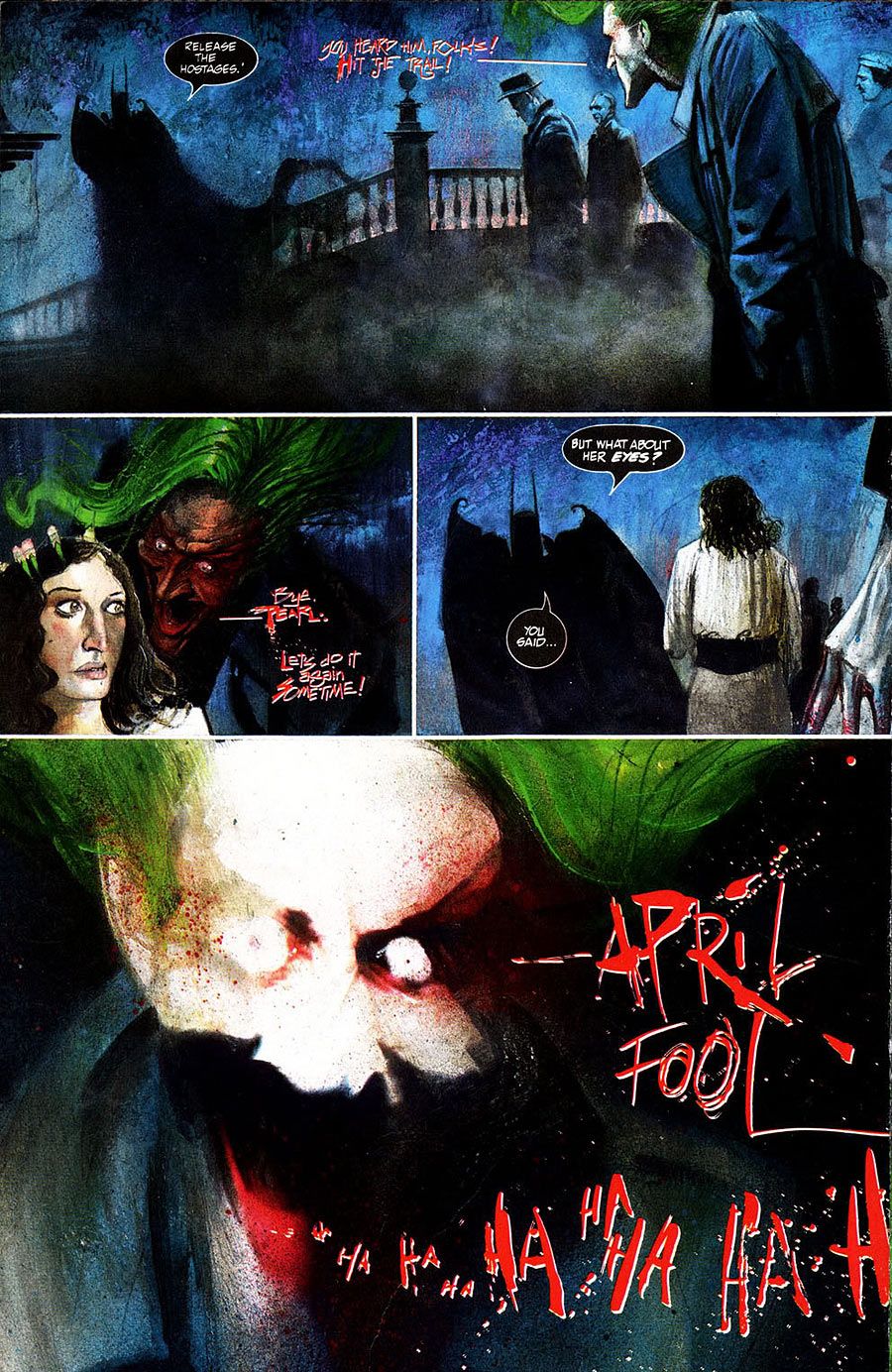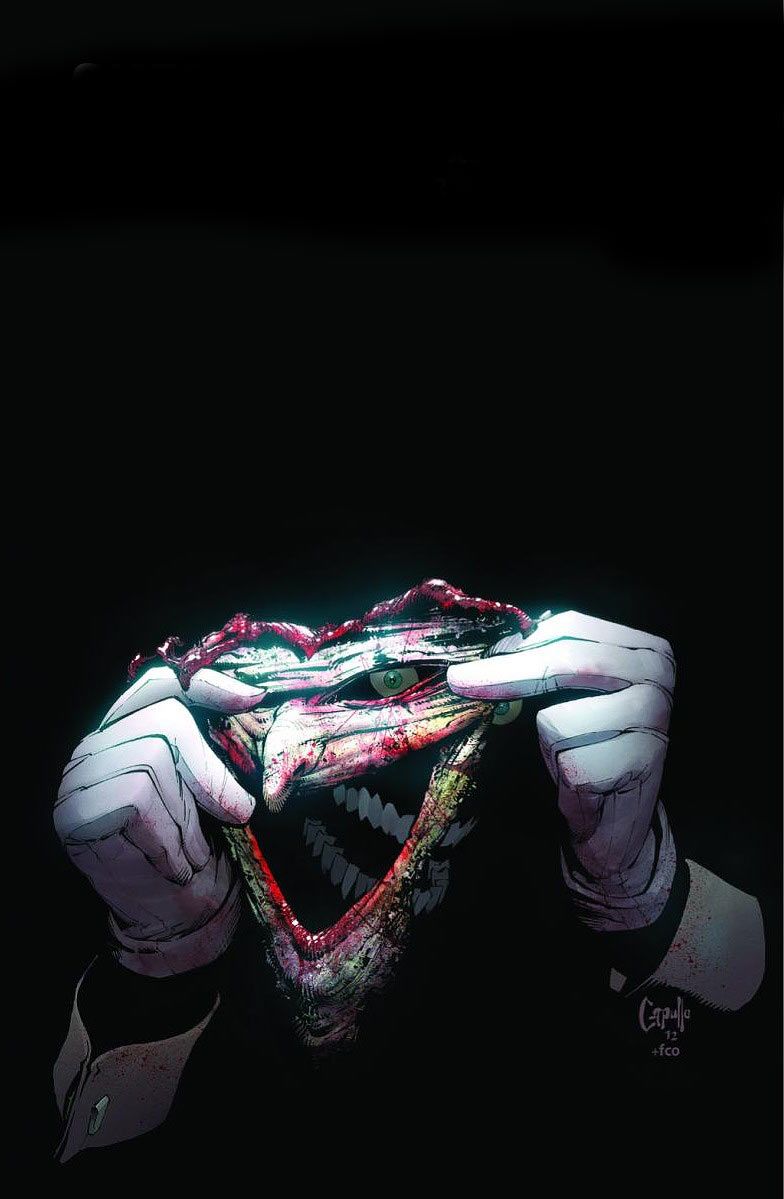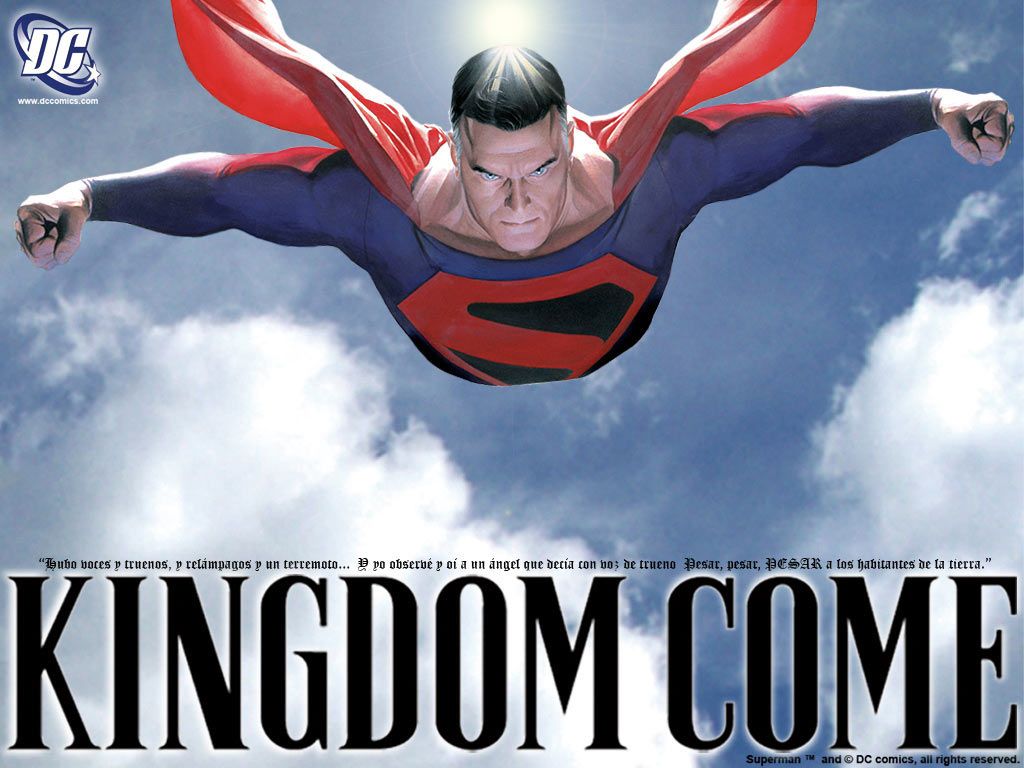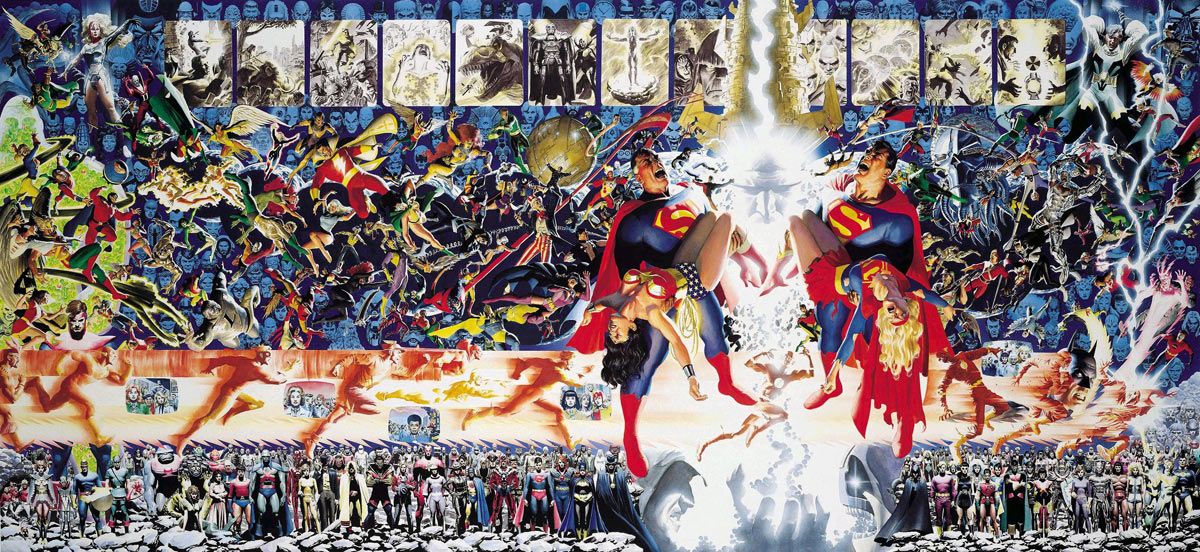While fans look to the big screen for the next super hero blockbuster, it should not be forgotten that Warner Bros. Animation has been producing amazing feature-length films starring DC Comics' pantheon of characters since 2007. Recently, WB Animation announced that their upcoming animated features will be focused on Batman, Superman and the Justice League, with one film per year going outside the boundary of those three immortal franchises.
EXCLUSIVE: "Justice League War" Launches "First Salvo" for Future DC Animated Features
With nine decades of stories for WB to mine, CBR enters the DC archives to figure out which stories from their library could best make use of the studio's animators and knack for spot-on voice acting. While it's impossible to narrow down It's a difficult task to cull nearly a century of stories down to a manageable number, but we've emerged with the ones that best embody the characters and storytelling that have made DC an industry leader throughout its history.
"Justice League: A New Beginning" (1989)
By Keith Giffen, J.M. DeMatteis and Kevin Maguire
The Justice League's rich history could easily fuel years of animated features, but if DC wants to avoid things getting stale, they may want to look at one of the League's most popular and unexpected eras. In 1989, Keith Giffen, J.M. DeMatteis and Kevin Maguire presented a "Justice League" that was a hilarious send up of the iconic team. It featured many "Justice League" favorites like Batman and Martian Manhunter but also brought lesser known characters like Blue Beetle, Booster Gold, Guy Gardner, Captain Atom, Fire and Ice to fans' attention in a big way. Any enthusiast of this era knows, this "League" was laugh out loud funny, a hilarious take on super hero tropes and League history that has become as beloved by fans as it was surprising. Lest you think it was all fun and games, the creators managed to squeeze in intense heroic dramas between the guffaws and some great character work that turned second stringers into rich, fleshed out icons. Seeing Batman's one-punch knockout of the belligerent Guy Gardner would be worth the price of admission, but seeing the beloved Blue and Gold team of Beetle and Booster in animated form is something fans have been dreaming of since the first Bwa-Ha-Ha of this beloved age of the League.
"New Gods" (1971)
By Jack Kirby
Yes, DC Animation wants to focus on their biggest icons in the studio's animated features, but with "New Gods," DC and WB have their own potential "Star Wars" franchise just waiting to be exploited. It could be easy enough to include Superman as a point of view character to add to the property's initial marketability -- it worked incredibly well when Darkseid and the rest of the New Gods were presented in "Superman: The Animated Series." WB excels at adapting an artist's style into animated form, and the thought of an animated Kirby tribute, crackling with the power only the King could muster, is one that would likely send fans into a fervor. Seeing Kirby-esque versions of Orion, Darkseid, Mister Miracle, Highfather, Big Barda and the Forever People coming to life could be DC Animation's finest hour; throw in a guest appearance by Jimmy Olsen to keep the Superman connection going and you have one of the greatest casts in animation history. After Kirby, great writers and artists like John Byrne and Walt Simonson built upon the foundations of "The Fourth World," extending the epic which could allow any animated film to have a plethora of huge ideas to choose from. Kirby built a world in every panel he drew, a world that is ripe for life in other media. The era of "The New Gods" could begin with an animated film, a film that could showcase the sheer majesty and imagination of Jack Kirby.
"Crisis on Earth-One" (1963)
By Gardner Fox and Mike Sekowsky
It may not be New 52-centric, but the first official meeting between the Justice League of Earth 1 and Justice Society of Earth 2 is an event many DC fans have longed to see come to life for decades. An animated "Crisis on Two Earths" could bring the old guard of the JSA to animation for the first time (other than a brief appearance on Cartoon Network's "Batman: The Brave and the Bold"). It could be very cool to see a Silver Age animated feature, a loving adaptation of the style and mindset of yesteryear. Or, WB could use the original series as a template to do a modern version of the reality-hopping story by utilizing the New 52 heroes currently headlining DC's "Earth 2" ongoing series. Either way, the first "Crisis" was the definitive tent pole event of the Silver Age, a story that made the DC Universe a bigger and more diverse place and reintroduced a generation of fans to Jay Garrick, Alan Scott, the original Hawkman, the original Dr. Fate, the original Sandman and the other JSA heroes who could eventually become just as beloved as their Earth 1 counterparts. While an animated "Justice League: Crisis on Two Earths" feature was released in 2010, it borrowed only loosely from the original and used modern interpretations of the characters. As DC Animation looks toward the future with more adaptations of contemporary New 52 titles, many fans could welcome one more look into the past in an adaptation of one of the most beloved tales of the Silver Age.
"Batman" Gotham by Gaslight" (1989)
By Brian Augustyn and Mike Mignola
DC Animation has yet to exploit the "Elseworlds" concept beyond "Justice League: The New Frontier." The first "Elseworlds" story is still one of the best as "Gotham by Gaslight" presents the riveting tale of Batman versus Jack the Ripper. This moody, atmospheric alternate future can certainly take advantage of the Steampunk movement and present an unexpected yet timeless "Batman" story. Batman is such an enduring character because he works in any setting and any genre. Seeing an animated gothic horror featuring the Dark Knight, especially one inspired by the art of Mike Mignola, could be one of the most original and gripping "Batman" tales to date. Removing Batman from the modern era could certainly garner attention while presenting a mash-up of modern day super heroics with archetypes of the Victorian era.
"Robin/Batgirl: Year One" (2001 & 2003)
By Scott Beatty, Chuck Dixon, Marcos Martin and Alvaro Lopez
If DC wants to put the majority of their animated focus on "Batman," sooner or later they will need to spend some time with the extended "Bat Family" in order to keep things fresh. In the early 2000s, writers Chuck Dixon and Scott Beatty presented the definitive origins of Robin and Batgirl in two intense solo adventures that fleshed out the beginnings of the two heroic icons. The result was two tightly plotted critical darlings that found the specialness of each character independently from their mentor. A split release could bring these origin stories home to fans seeking a fleshed out Bat Universe, and allow DC to extend the Bat brand to include two of Batman's more popular supporting cast. "Batgirl" in particular really captured the special nature of Barbara Gordon and an animated adaptation of her origin could inform the public just how cool Batgirl really is. There are some rumblings that fans might be in store for some Robin action in the "Man of Steel" sequel, and if this is true, DC may want to notify the public of Robin's rich history. Plus, there is always room for more female featured leads in any media.
"Shazam: The Monster Society of Evil" (2007)
By Jeff Smith
While "Shazam" (or "Captain Marvel" to the purists) has not been the most commercially viable DC property in recent decades the character is still one of DC's historically great properties that once sold more than even "Superman" or "Batman" during the Golden Age. Shazam deserves his chance in the spotlight and an animated feature can help get him there. There has never been a better modern take on the character than Jeff Smith's "Monster Society of Evil," a miniseries that captured the innocence and purity of the concept while telling a modern story of heroism and courage. On the surface, "The Monster Society of Evil" was a lighter story, a classical take on the origin of Shazam, a pure character meditation on Shazam's alter ego Billy Batson, but beneath the surface, it was a tale of the sheer horrors of childhood and the cruelty of the adult world. This multi-layered thematic study of the "Shazam" concept was a Golden Age riff with a modern sensibility that merged the innocence of yesterday with the complex thematic storytelling of today. If DC wants to grow their pantheon beyond their core franchises -- and that one wild card DVD a year says they do -- Shazam could be the perfect character to start with, and this is the perfect "Shazam" story to reintroduce the world to that One Magic Word.
"Hard Traveling Heroes" (1970)
By Denny O'Neil and Neal Adams
Who doesn't like a buddy road movie, particularly when it features two complimentary-hued heroes hitting the road to forge an ageless friendship? DC would be wise to look to its television sensation, Green Arrow, and focus on the Oliver Queen stories The CW's "Arrow" can't or won't do. "Hard Traveling Heroes" is considered by many to be one of the first socially relevant mainstream comics. While an animated feature should probably refrain from using junkie Speedy, there is more than enough to this road story to deliver a very memorable film. O'Neil and Adams shined an altogether different light on "Green Lantern" and the Guardians of the Universe, updating and grounding the concept in the social realities of the day. "Hard Traveling Heroes "was one of DC's greatest human adventures and remains a touchstone in comic history. If WB is worried about lack of brand recognition, this could even be billed as a "Justice League" feature with Ollie, Hal and Black Canary starring in this film, but regardless of the title, the story encapsulates an era fans still remember fondly as being a watershed moment for comics.
"Wonder Woman: The Hiketeia" (2002)
By Greg Rucka and J.G. Jones
With Wonder Woman ready to make her cinematic debut in Warners Bros.' still-untitled live-action "Batman Superman" project; the studio should look deep in their archives to find memorable stories that mashed the Amazon up with her fellow Trinity members. Writer Greg Rucka's "Wonder Woman: The Hiketeia" was his first outing on the character, but he displayed a clear understanding of not only what makes her tick, but what makes her resonate with fans. The book spotlighted the moral contrast between Batman and Wonder Woman as Diana enters the Hiketeia, an honor oath that bonds her with a vengeful woman named Danielle Wellys who is on a mission to destroy the sex slavers who murdered her sisters. With lush art by J.G. Jones, the story is structured like a Greek Tragedy, with vengeance and obsession shaking the foundations of the lives of the characters. Batman, the ultimate figure of justice -- never vengeance -- stands in the way of Danielle and her mission, something the blood bound Diana cannot abide. This is the greatest battle between the legendary DC heroes, one rooted in fundamental differences between their personal missions and one that will allow fans to glimpse their ethical differences prior to Wonder Woman's 2016 film debut. Wonder Woman, for whatever reason, has always been a bit of a tough sell, but "The Hiketeia" could be the right story to show modern fans the potential character depth of Wonder Woman, and with a featured role for Batman it could definitely be commercially viable. Plus, what fan is going to pass up that classic cover of Wonder Woman curb stomping Batman?
"Batman and Robin" (2010)
By Grant Morrison and Frank Quitely
The creative duo of Grant Morrison and Frank Quitely already had a hit DC Animated Film adapted from their work in "All-Star Superman," and their time on "Batman and Robin" was of the same quality as their work on the Last Son of Krypton. As mentioned, DC wants to mine the "Batman" property for all its worth and in "Batman and Robin," DC created a very different Batman story dynamic. Morrison and Quitely's new Dynamic Duo was Dick Grayson and Damien Wayne, a decidedly different version of the classic pairing. Fans not familiar with the comic could be introduced to a Batman and Robin where it is Robin that is the brooding hero and Batman that is the smiling, hopeful crusader. With "Son of Batman" featuring a grown up Damien Wayne as Batman, this film could be the perfect counterpoint as the next DC Animated featured. "Batman and Robin" could also serve as the debut of the new rogues such as Professor Pyg and Toad that Morrison introduced to the Batman mythos. There was a great little brother/big brother dynamic that kept the Bat Signal lit in Bruce Wayne's absence and it seems only right that the world gets to experience this groundbreaking storyline.
"Superman: Last Son" (2006-2008)
By Geoff Johns, Richard Donner and Adam Kubert
Essentially, "Superman: Last Son" is a direct sequel to 1980's "Superman 2" without the camp. With the resurgence of the Phantom Zone Criminals thanks to "Man of Steel," "Last Son" could provide a perfect opportunity for DC Animation to further exploit Zod and his minions as well as adapt one of the most intense Superman comic stories of the past decade. What fan wouldn't want to see more "Superman" stories from "Superman: The Movie" director Richard Donner? "Last Son" presents the origin of Ursa, Zod and Non, the iconic Phantom Zone criminals, as well as classic villains Fiora, Jax-Ur and the rest of the exiled denizens of Krypton's dark past, allowing DC Animation to forge a connection between both their animated universe, the fledgling big screen DCU and the DC Comics they're all based on. Geoff Johns and Donner updated the Zone villains for the modern day while paying a loving tribute to what had came before. The story also introduces the character of Christopher Kent, the son of Ursa and Zod who is adopted by Superman and Lois. The comics never had the chance to fully explore Christopher as a character or the ramifications his existence had on Superman, Lois or the DC Universe in general, so "Last Son" could be a rare opportunity for an animated feature to extend a character first introduced in the comics. Plus, the character is a loving and fitting tribute to the legacy of Christopher Reeve, a fitting monument to a man who, with the help of Donner, made Superman soar to his greatest heights. As DC moves to the next era of Superman in future animated and cinematic features, one last tribute to Reeve, Donner, Terrance Stamp, Marlon Brando, Margot Kidder and the "Superman" of the past is called for. "Last Son" could be that fitting tribute.
"Superman: Panic in the Sky" (1992)
by Dan Jurgens, Jerry Ordway, Louise Simonson, Roger Stern, Jon Bogdanove, Tom Grummett, Bob McLeod, Brett Breeding, Doug Hazlewood, Dennis Janke and Denis Rodier
If Warner Bros. wants their big guns, this is story that has them all. A massive alien invasion from Warworld saw Superman rally the heroes of Earth to protect his adopted world in one of the most tightly plotted, action-packed stories of the early '90s. "Panic in the Sky" became the template for what the '90s crossover could become, a massive, multi-part epic that featured just about every hero in the DC Universe in a united front against the hordes of Mongul. Some story aspects and characters would have to be changed, such as the '90s Matrix Supergirl being swapped out for the Kryptonian version, but most of the characters in "Panic in the Sky" remain relatively consistent in the modern era. Slade Wilson, AKA Deathstroke the Terminator, plays a major role as Superman's field general, a story point that can take advantage of the character's massive surge of popularity thanks to the CW's "Arrow." "Panic in the Sky" can be marketed as a "Superman" or "Justice League" story and the conflict is grand enough to carry any feature film. The story also has featured roles for Lois Lane, Jimmy Olsen, many of the New Gods and Brainiac, giving DC enough iconic characters to choose from to make "Panic in the Sky" a way for DC to stuff a film with many of their characters beyond the nucleus of the Justice League. "Panic in the Sky" may not be as fondly remembered as some of the crossovers that followed, but the story set the stage for the scale for future events and is a loving tribute to the length and breadth of the DC Universe.
"Batman: Court of Owls" (2011)
By Scott Snyder and Greg Capullo
There are many Bat villains DC Animation can choose from, but there is the danger of just playing the hits if DC keeps going back to the Joker, Two Face, and Ra's Al Ghul. "Batman: Court of Owls" was one of the most stunningly original "Batman" stories ever told, a send up of the secret society trope that brought Gotham to the brink of destruction. Imagine the Freemasons, but with access to super-powered technology and a masochistic love of pain and destruction and you'll have an idea how deadly the Owls are. "Batman: Court of Owls" could be an entry point into a whole new DC mythology as the film could introduce the ages old real power behind Gotham City along with the Talons, the legion of Owl enforcers, to create a threat very different than the usual monsters and rogues that plague Gotham. Scott Snyder is one of the freshest voices in comics, and he deserves to have his finest story animated so the world can share in his genius. Greg Capullo's take on Batman fighting the Talons over Gotham's rooftops seems like a perfect fit for animation, so hopefully this one is already being bandied about.
"Batman: Knightfall" (1993)
Bt Chuck Dixon, Jo Duffy, Alan Grant, Dennis O'Neil, Doug Moench, Jim Aparo, Jim Balent, Eduardo Barreto, Bret Blevins, Norm Breyfogle, Vincent Giarrano, Tom Grummett, Klaus Janson, Barry Kitson, Mike Manley, Graham Nolan, Sal Velluto, Mike Vosburg and Ron Wagner
Luckily for the Batman-loving Warner Bros. Animation, there are a metric ton of "Batman" stories to choose from for possible adaptation. The trick is finding stories diverse enough to avoid hitting the same beats over and over. In "Knightfall," DC Animation can explore the ramifications of someone other than Bruce Wayne taking up the mantle of the Bat. Bane is more popular than ever Tom Hardy's performance in "The Dark Knight Rises," and what better story to adapt in animation than the villain's first and biggest assault on Batman? The breaking of the Bat was a seminal moment in the Dark Knight's history, a moment where fans were reminded that Bruce Wayne was human and could be hurt. Bane was a new type of Bat villain, a physical and mental threat to Wayne that, for a time, took out Gotham's protector. The story of Wayne's road to recovery, the coming of Bane and the rise and fall of Jean Paul Valley as the new Batman was one of the most popular stories of the '90s, a cultural touchstone that made readers realize just how special a hero Bruce was. Valley's ascension and fall could be played out as a riveting tragedy that proves being a true hero takes more than armor or weapons. Valley's new Bat suit could certainly be an attention getter to newer fans who could be drawn to the feature by the promise of a new Batman. "Knightfall" could show the world the roots of "Dark Knight Rises" and be a testament to why the legend of Batman endures.
"Sinestro Corps War" (2007)
By Geoff Johns, Dave Gibbons, Ivan Reis, Patrick Gleason and Ethan Van Sciver
By including Green Lantern Hal Jordon's Justice League teammates, a "Sinestro Corps War" animated film could fit Warner Bros.' character parameters, plus the sheer scope and emotional resonance of the story could make for one heck of a movie. Warners already produced a "Green Lantern" animated feature with 2009's "Green Lantern: First Flight," an effective and fun origin story, but nothing close to the sheer scale of the "Sinestro Corps War." The original comic event took Sinestro from Green Lantern foil to master villain. Additionally, the story created a spectrum of Lanterns, propelling the narrative into new and unexpected directions that could inform the title for years to come. The myriad monstrous Yellow Lanterns could come to intense life in an animated feature showing the rest of the world what fans already knew, that Sinestro and his army are some of the most frighteningly intense villains in modern comics. The "War" is a perfect Hal Jordan story; even in the face cosmic drama, intense interplanetary conflict and the sheer amount new characters introduced, everything that transpires affects Hal as he must go up against his former mentor with the fate of the galaxy at stake. WB Animation has yet to produce a film that teams Hal with all three Green Lanterns of Earth: John Stewart, Kyle Rayner and Guy Gardner. "Sinestro Corps War" is a huge story, but one told from the relatable point of view of Hal Jordan. It's a tribute to the "Green Lantern" mythos and a celebration of the Geoff Johns era of the character, a time when the "Green Lantern" family of titles was at a creative apex not seen since the Silver Age. "Sinestro Corps War" became the template for the modern comic book event, and with the proper treatment could do the same in animation.
"Batman: The Long Halloween" (1996-1997)
By Jeph Loeb and Tim Sale
The purest Batman story that has yet to be adapted to animation, "The Long Halloween" is a classic journey through the horrors of Gotham City in a yearlong murder mystery that takes the Dark Knight to the edge of sanity and beyond. The story prominently features Batman's rogues, nicely positioning it to tap into the villainous zeitgeist established by the mega-popular "Arkham" video game series. "The Long Halloween's" mystery plotting could make it stand out from other Batman animated efforts. At its heart, Jeph Loeb and Tim Sale's classic is a pure murder mystery, a genre bending take on Batman that has yet to be tried in an animated "Batman" film. The marketing of this ghastly whodunit could focus on the idea of Batman as a master detective in this noir thriller. The story features the most horrific versions of Batman's foes; twisted creeps who do not so much operate in Gotham as haunt it. The book also serves as an origin for Two-Face, a classic Bat villain who has also yet to be addressed in animated feature form. "The Long Halloween" could make it one of the darkest and most commercially appealing film in DC's library.
"Blackest Night" (2009-2010)
By Geoff Johns and Ivan Reis
The penultimate event from the pre-New 52 DCU,"Blackest Night" seems like a no brainer animated movie. Is anything in our "The Walking Dead"-obsessed age more marketable than a zombie Batman? Like "Sinestro Corps War," "Blackest Night" could be packaged as a "Justice League" title, as most of the beloved League members are turned into black clad zombie murder machines. How can DC not sell the promise of Zombie Superman? DC could have whittle down what is a very lengthy story, but seeing an animated version of the Spectrum Lantern Corps going up against a legion of undead could be one of DC Animation's finest hours. If DC opts to first produce "Sinestro Corps War" as a feature, "Blackest Night" could even serve as a sequel to it considering the Yellow Lanterns and their leader play a prominent role in the battle against Nekron, Black Hand and scores of dead heroes. Someone is going to have to get Daryl Dixon and Rick Grimes a power ring, because this zombie infestation won't be stopped by a simple, bow or bullet. "Blackest Night" is the story Green Lantern was born to star in and it is one of the most thoroughly sellable epics in DC's huge bag of tricks.
"Arkham Asylum" (1989)
By Grant Morrison and Dave McKean
This one might be on the tougher side in terms of developing it for the same audience as its other Batman movies, but "Arkham Asylum" could deliver a "Batman" tale like no other, an exploration of the horror genre with Batman as the lone light in the dark world of the most insane place on Earth. For Warner Bros. Animation, more Joker is a good thing, and "Arkham Asylum" is the ultimate Joker story, a descent into madness like nothing even attempted by any studio. Seeing Dave McKean's artwork come to life could be a horrific treat for long time fans while Grant Morrison's story could be the most risky tale DC Animation ever attempted to adapt. The feature's writing team could have to work overtime to keep this below a hard R-rating, but some dramatic camera cuts and implied violence could allow DC to bring the true terrors of Gotham's villains home to fans of (almost) all ages. This "Dante's Inferno"-like journey into the Hell that is Arkham could further allow DC Animation to exploit the popularity of the Bat villains and tell a Batman tale that is more Stephen King and Clive Barker than Jerry Robinson and Bill Finger. In this darkest of stories, the Dark Knight never seemed more heroic being the only light in the bowels of madness. As evidenced by "Coraline," animating Dave McKean's art is truly something to behold.
"Batman: Death of the Family" (2012)
By Scott Snyder and Greg Capullo
This one fits all the criteria DC Animation seems to be looking for. A "Batman" story set in the New 52 Universe starring the Joker -- but not just any Joker. Snyder and Capullo's take on the Clown Prince of Crime twists the knife even further, making Joker a self-mutilated madman who will stop at nothing to prove he is Batman's greatest asset by destroying everything the Dark Knight loves. In "Death of a Family" the Joker wants to show Batman that it is the Clown Prince of Crime that has driven Batman to become Gotham's greatest knight, and that everything else, particularly his extended family, is a distraction and an insult to the perfect symbiotic relationship of chaos and order symbolized by Batman and the Joker. Snyder's Joker takes the best parts of the character's previous incarnations, from the classic master criminal of the Silver Age to Alan Moore's nihilistic madman in "The Killing Joke" (which isn't listed here because of its brevity), to Heath Ledger's portrayal of a man who put on clown makeup one day and never took it off because he saw the world as a joke. All the previous Jokers are there in Snyder's villain and the visual of this new Joker, with his visage removed and strapped to his fleshless face, could sell itself. "Death of the Family" is a deep look into Batman's extended cast, but mostly, it is a celebration of the eternal war between good and evil, a dance that lasts forever. Really, "Death of the Family" is the ultimate modern Joker story, and as such, was made to be part of DC's animated library.
"Kingdom Come" (1996)
By Mark Waid and Alex Ross
At its core, "Kingdom Come" has always really been the last" Justice League" story. This story of the true meaning of heroism has long been a DC landmark, a story where writer Mark Waid and artist Alex Ross took a deep look into the souls of all of DC's major heroes. At its heart though, "Kingdom Come" is a story of DC's Trinity -- Superman, Batman and Wonder Woman -- what differentiates them, what their great failings are, and most importantly, what makes them heroes. "Kingdom Come" is timeless; a story that can fit into the parameters of the classic DC Universe or the New 52 version that the current crop of direct to video animated films are exploring. The book contains some of the most unforgettable battles in DC history from the DC heroes versus Magog for the fate of everything to the unforgettable moment when Superman must do battle with a mind-controlled Shazam. There are scores of great, character defining moments for Lex Luthor as well, who is at his villainous best in this dystopian DCU future. The book is a celebration of all things DC as most, if not all, of DC's pantheon of heroes and villains make an appearance during the course of the story. DC animators could have to work overtime to get them all in there, but the plot is clean and easy to follow as the Trinity serve as the viewer's guide to the complexities of the future DC Universe. Seriously, seeing the Kingdom Come Superman versus Shazam battle should be on every fan's animated wish list. The only caveat is that "Kingdom Come" could have to go beyond traditional animation. How Alex Ross' hyper-realistic style could possibly be brought to life is anyone's guess, but fans deserve the same feeling readers got when first seeing Ross' powerful pages. It might be one of the toughest stories to pull off in animation, but the rewards could vastly outweigh any effort expended to tell what is quite possiblly the greatest Justice League story ever told.
"Crisis on Infinite Earths" (1985)
By Marv Wolfman and George Perez
It doesn't come bigger than the granddaddy "Crisis" of them all. "Crisis on Infinite Earths" was many things -- the first, true epic crossover event; the story that transitioned the DC Universe from the continuing narrative of the Golden Age into the new DC Universe; a showcase of the immense talents of Wolfman and Perez. Most of all, "Crisis" was a riveting story. It could be very difficult to adapt every moment, every death, every battle of the "Crisis" into even a two-part movie, but by narrowing the point of view to, say, Barry Allen in Part 1 and Kara Zor-El in Part 2, it might make the complex story linear and personal. Yes, there are tons of characters involved, but plenty of that is just background noise (awesome background noise thought it may be) to the noble sacrifice of Barry and Kara. A "Crisis" animated feature doesn't necessarily have to mean a universal reboot, but it could be used to inform mainstream fans of the idea of a multiverse and can also be a public showcase of the awesomely rich history of the 80 years of the DC Universe. "Crisis on Infinite Earths" redefined just how big comics could be, and the arrival of the Anti-Monitor and the ensuing struggle and sacrifice to set the Universe right can show fans of DC Animation just how big comics can get. While it might be a struggle for WB's animators to cram as many characters into every frame as Perez did in every panel of the comic, bringing to animated life the sacrifices of two of DC's most iconic characters could be a breathtaking achievement and one well worth striving for.
Stay tuned to CBR News for the latest on DC's animated efforts.


